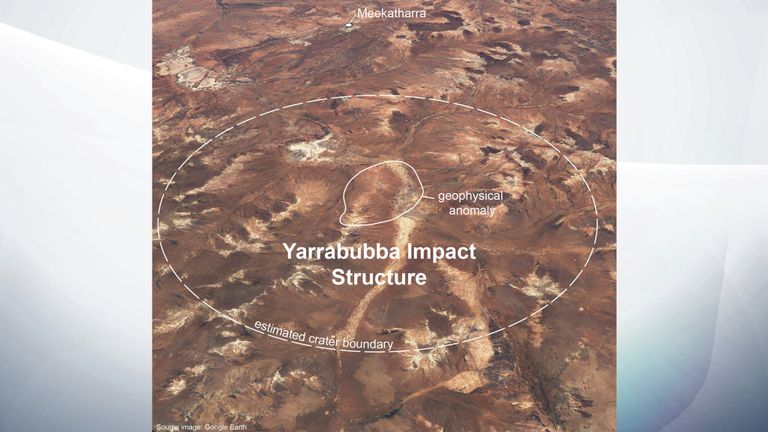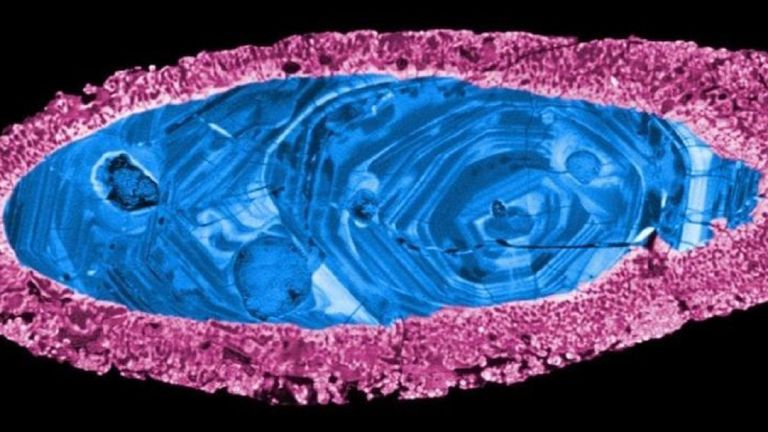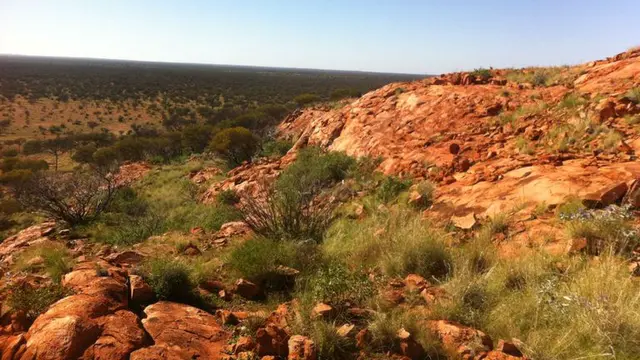The world's oldest asteroid crater has been discovered in Western Australia, which could have ended an Ice Age, according to scientists.
A team from Curtin University, in WA, said the Yarrabubba strike, in the Outback, happened 2.2 billion years ago and is around half as old as the Earth.

Image:Until now it was unclear how old the crater was. Pic: Curtin University
Experts from Curtin's School of Earth and Planetary Sciences say they analysed the minerals - zircon and monazite at the base of the eroded hole that were "shock recrystallised" by the impact, to calculate exactly when it happened, in a similar way tree rings can provide clues about their past.
They believe the strike released huge volumes of water vapour into the atmosphere, which may have lifted the planet out of a deep freeze.
Professor Chris Kirkland said Yarrabubba - which sits between Sandstone and Meekatharra - was known to be an impact structure for many years, but it was unclear exactly how old it was.
He continued: "Now we know the Yarrabubba crater was made right at the end of what's commonly referred to as the early Snowball Earth - a time when the atmosphere and oceans were evolving and becoming more oxygenated, and when rocks deposited on many continents recorded glacial conditions.
Another scientist involved in the research, Associate Professor Nicholas Timms, added: "The age of the Yarrabubba impact matches the demise of a series of ancient glaciations.
"After the impact, glacial deposits are absent in the rock record for 400 million years.
"This twist of fate suggests the large meteorite impact may have influenced global climate. And this finding raises the question whether this impact may have tipped the scales enough to end glacial conditions".
The team say their study could have major implications for future crater discoveries.
Listen to "A New Climate" on Spreaker.
:: A New Climate is a series of special podcasts from the Sky News Daily. Listen on Apple Podcasts, Google Podcasts, Spotify, Spreaker
Senior research fellow Dr Aaron Cavosie, said: "This one sat in plain sight for nearly two decades before its significance was realised."

Image:Experts analysed minerals that were 'shock recrystallized' by the impact. Pic Curtin University
He added that the discovery "raises the question of whether all older impact craters have been eroded or if they are still out there waiting to be found".
The study has been published in the leading journal Nature Communications.
 简体中文
简体中文

